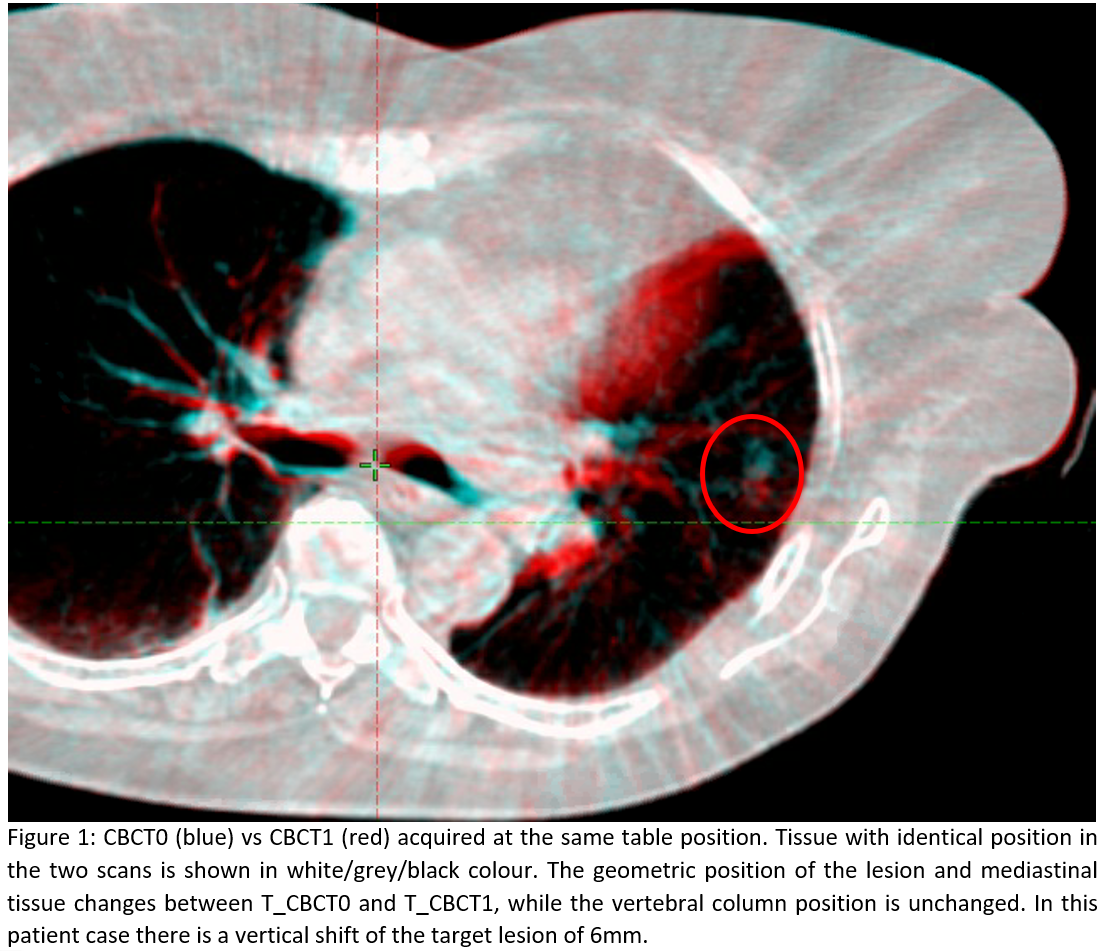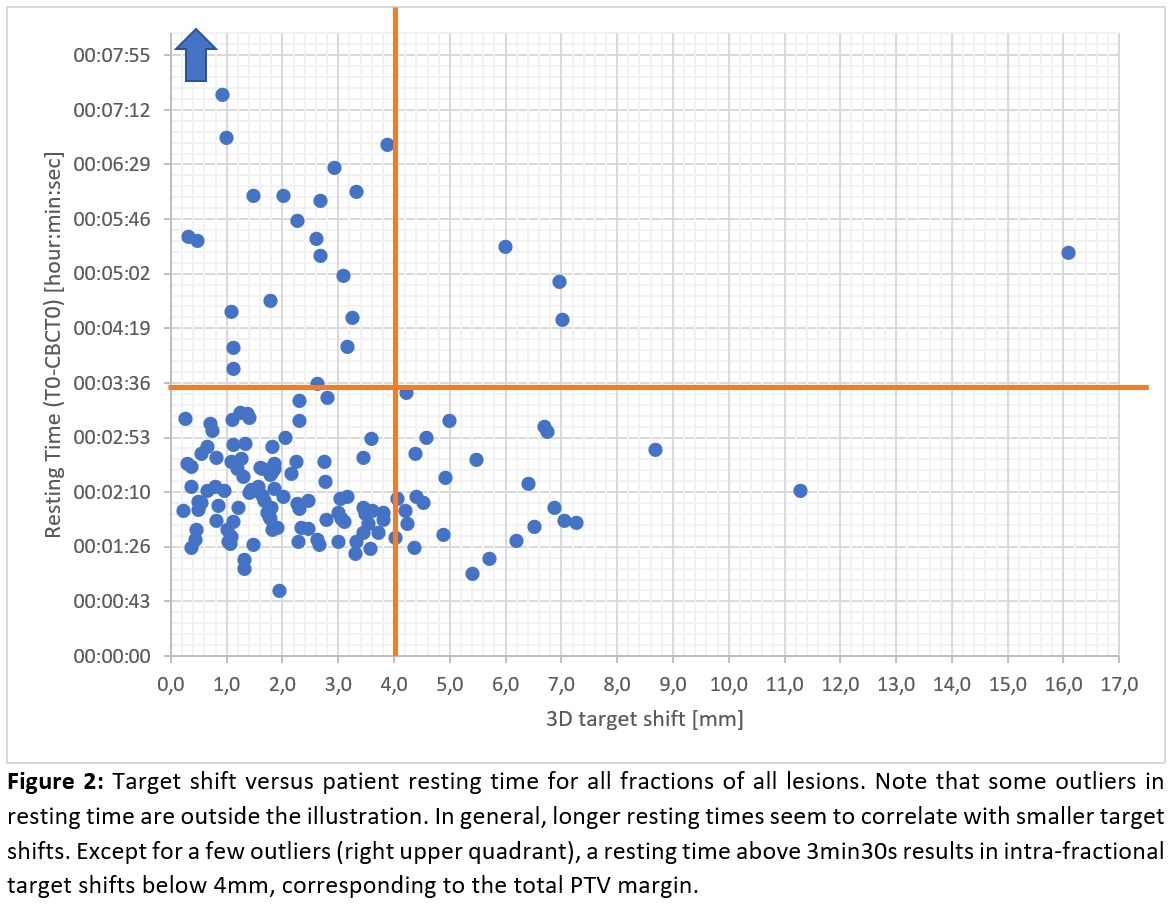Intra-fractional target shift during stereotactic treatment of peripheral lung lesions
PO-1903
Abstract
Intra-fractional target shift during stereotactic treatment of peripheral lung lesions
Authors: Tine Bisballe Nyeng1, Simon Nyberg Thomsen1,2, Ditte Sloth Møller1,2, Rune Hansen1, Azza A. Khalil3, Lone Hoffmann1,2
1Aarhus University Hospital, Department of Oncology, Medical Physics, Aarhus, Denmark; 2Aarhus University, Department of Clinical Medicine, Faculty of Health Sciences, Aarhus, Denmark; 3Aarhus University Hospital, Department of Oncology, Aarhus, Denmark
Show Affiliations
Hide Affiliations
Purpose or Objective
Lesions in the thorax may be prone to both respiratory motion and geometrical shifts during radiotherapy delivery. Treatment of small peripheral lung lesions with stereotactic radiotherapy (SRT) is delivered in very few fractions, making geometrical miss of the target in any fraction more severe. We investigated the intra-fraction target displacement and the impact of resting time after patient positioning.
Material and Methods
Fifty-one lung lesions were treated with SRT of 45-67.5Gy in three fractions, with a planning target volume (PTV) margin of 4mm. Patients were positioned in the treatment room in an individualized immobilization device (End of positioning, Time: T0). Subsequently, a cone-beam CT (CBCT) image was acquired (Start of acquisition, Time: T_CBCT0), and the couch position was corrected using an online soft tissue match on the target to the planning CT (pCT). Hereafter, 7-8 static treatment fields were delivered and a post-treatment CBCT was acquired (Start of acquisition, Time: T_CBCT1). Retrospectively, CBCT0 and CBCT1 were matched to pCT on the target and subsequently, the vertebral column, and the resulting 3D vector shift of the target and the shift of the vertebra between CBCT0 and CBCT1 were calculated. Correlation between target and vertebra shifts was tested by calculating the Spearman’s rank correlation coefficient. T0 was identified in the treatment machine logs (TrueBeam 2.7) for each fraction of each patient (153 fractions in total) as the time for the final movement of the treatment couch to the planned setup-position. T_CBCT0 and T_CBCT1 were found in the treatment management system (Varian Aria 16.1). The resting time, defined as the time interval from T0 to T_CBCT0 was calculated.
Results
The median [range] target and vertebra shifts were 2.2mm [0.2;16.1] and 0.9mm [0;5.7], respectively. In 54 of the 153 fractions (in 30 of the 51 lesions), target shifts of more than 3mm were seen (see Figure 1), three of these above 8mm.

Vertebral column shifts were generally small and were uncorrelated to target shifts (ρ=0.4566). The median T0 to T_CBCT0 time was 133s [52;1478]. The median resting time of fractions with target shifts below and above 3mm was 143s [52;1478] and 119s [65;405], respectively. A tendency towards smaller intra-fraction target shifts is seen with longer patient resting time (see Figure 2).

Except for a few outliers, when the resting time is at least 3min30sec all intra-fractional target shifts are below 4mm, corresponding to the total PTV margin.
Conclusion
For some lesions, large intra-fractional shifts are observed. For most lesions, this can be reduced by allowing a longer patient resting time. Except for a few outliers (see Figure 2), a resting time above 3min30s leads to intra-fractional target shifts below 4mm. The observed target shifts were uncorrelated to the shifts of the vertebra.